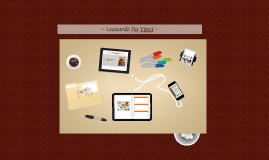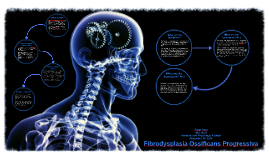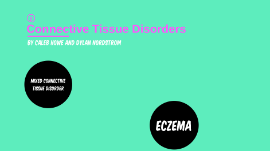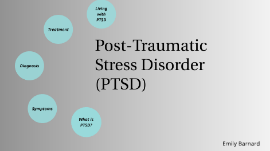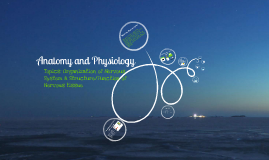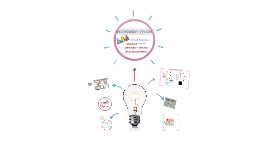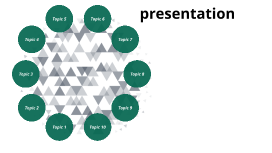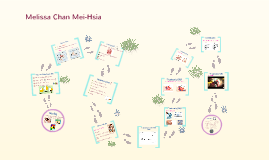anatomy presentation
Transcript: Post-Traumatic Stress Disorder (PTSD) Emily Barnard PTSD is a pychiatric disorder that can occur in people who have experienced or witnessed a traumatic event such as a natural disaster, a serious accident, a terrorist act, war/combat, rape or other violent personal assault. What is PTSD? What is PTSD? Intrusive Thoughts-repeated involuntary memories, distressing dreams, or flashbacks Avoidance- avoid reminders of the event which can include people, places, and situations that cause a feeling of distress Negative Thoughts and Feelings- ongoing and distorted beliefs about oneself or others, ongoing fear, horror, guilt or shame and becoming detached or estranged from others Arousal and Reactive Symptoms- being irritable, behaving recklessly, being easily startled, having problems concentrating or sleeping Symptoms in Adults Symptoms 6 and Under- bedwetting after learning to use bathroom, inability to speak, acting the trauma out when playing, being clingy with an adult 6-12- may remember the trauma in a different order then it occurred, feeling that there was a sign that the event was going to take place, acting out trauma or expressing it through play, pictures, and stories Symptoms in Children Children 12-18 - teens generally tend to display similar symptoms to adults, but they can show disruptive, disrespectful, impulsive or aggressive behavior, feel guilty for not acting differently during the event or consider revenge Symptoms in Teens Teens Have experienced or witnessed a traumatic event Experience at least one intrusive symptom (flashbacks) Experience at least one avoidance symptom (avoid going to certain places) Experience at least two negative mood or thought symptoms ("They want to hurt me" or feeling emotionally numb) Symptoms must last at least one month Symptoms must cause distress or function impairment Symptoms are not due to medications, substance use, or another illness Diagnosis Diagnosis Some doctors will have individuals with suspected PTSD get a brain scan done (MRI) to ensure it really is PTSD. People with PTSD have increased activity in the brain regions that are involved in fear processing and emotional regulation (limbic system, prefrontal cortex, cerebellum, and temporal, occipital, and parietal lobes) Brain Scan Brain Scan Brain Scan Comparison Scan Short and long-term use of therapy and medications together is the best way to improve the lives of those struggling with PTSD The main goals of therapy is to improve the individuals symptoms, teach them skills to help them deal with their PTSD, and restore their self-esteem Congnitive behavioral therapy- changes the thought patterens that are disturbing ones life. Many different therapies are used that fall under the category of cognitive behavioral therapy Treatment Treatment talk about the traumatic event and how one's thoughts related to it have affected thier life the individual writes about what they experienced Cognitive Processing Therapy Cognitive processing Helps the individual confront things that they have been avoiding Therapist will teach breathing techniques to ease anxiety when they think about the trauma Individual makes a list of things they have been avoiding and they learn ways to face each of them Prolonged Exposure Therapy Prolonged Exposure Brains of individuals with PTSD have an imbalance of neurotransmitters so they have an easily triggered "fight or flight" response leaving them on edge and jumpy Doctors normally start an individual on a medication that will affect the neurotransmitter serotonin (SSIR) Zoloft (Sertraline) Paxil ( Paroxetine) The FDA has only approved these two drugs for treating PTSD Medications Medications Educate themselves and others- the more one understands the eaiser it will be to explain to others what they are going through Connect with others- talk to others that also have PTSD Spend time with loved ones- even just sitting in the same room will improve one's mood Excerise- getting one's body moving regulates their mood and emotions Go to therapy- provides individuals with the skills they need to be successful Healthy Lifestyle- eat a well-balanced diet and avoid drugs and alcohol Living With PTSD Living with PTSD






